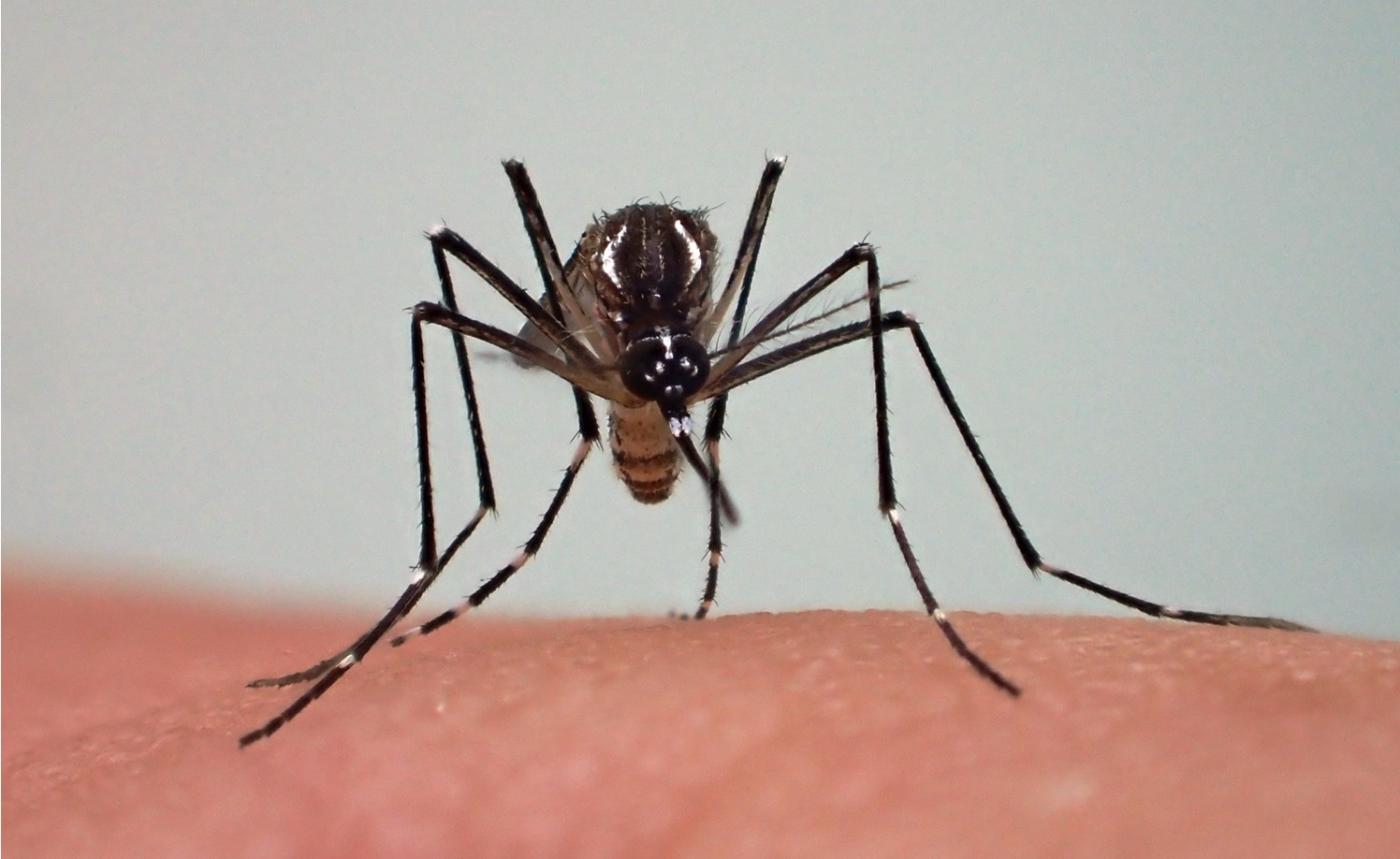What are the causes?
Yellow fever virus is transmitted to humans via bites from mosquitoes belonging to the Aedes and Haemagogus genera. It also infects forest monkeys in a mosquito-monkey-mosquito cycle, which can occasionally also include humans.
Yellow fever is a zoonosis, in all probability dating from ancient times, which was transmitted to humans when they ventured into tropical forests.
What are the symptoms?
Many people infected with yellow fever virus remain asymptomatic. For those who do experience symptoms, after an incubation period of three to six days the illness typically begins with a fever, chills, muscle pain and headaches. At this point, it could be confused with flu, dengue or malaria. In severe forms, there is a temporary remission after three days, followed by the onset of a hemorrhagic syndrome with black vomit, jaundice (which causes yellowish skin, hence the "yellow" in the disease name) and renal problems (albuminuria). Death then occurs in 20 to 60% of cases, after delirium, seizures and coma. All curable forms convey lifelong immunity.
How does the disease spread?
Yellow fever virus is spread by bites from mosquitoes that are mainly active during the day. The mosquito responsible for urban epidemics is Aedes aegypti. This mosquito is also the vector for dengue and Zika virus, other arboviruses that are spreading rapidly throughout the world. Global warming may accelerate the introduction of mosquitoes that can transmit these diseases into the northern hemisphere, where international trade is already providing opportunities for them to spread.
How is yellow fever diagnosed?
The relatively uncharacteristic symptoms of yellow fever make early diagnosis difficult. The virus can be detected by a PCR test on a blood sample. Serological assays may also be used to detect specific antibodies.
What treatments are available?
There is no specific treatment for yellow fever. Apart from prevention by vaccination, the only way to fight the disease once it has been contracted is through rest, rehydration therapy, and drugs to lower temperature and relieve vomiting and pain.
How can yellow fever be prevented?
The main preventive measure is vaccination. Yellow fever vaccination is safe and cheap, and it offers long-term protection.
International regulations require yellow fever vaccination prior to a first trip to an endemic region (a vaccination certificate is requested on entry to endemic countries). Vaccination certificates are valid from 10 days after the vaccination date.
Yellow fever vaccination is the only mandatory vaccination for travelers to the endemic intertropical regions of Africa and South America.
Other preventive measures mainly involve tackling the mosquitoes that transmit the disease and protecting against mosquito bites. There are several measures that can be introduced to help with prevention. In urban areas, it is crucial to eliminate places where stagnant water can collect to reduce the proliferation of mosquito larvae. Protective measures against mosquito bites include using mosquito nets and insect repellents and wearing long clothing.
How many people are affected?
WHO estimates that there are 200,000 cases of yellow fever annually across the globe, with 30,000 deaths.
Large-scale outbreaks affected tropical America in the 17th, 18th and 19th centuries, and it became "the most dreaded disease in the Americas." Today, yellow fever is rife in the intertropical regions of America and Africa, where vaccine coverage is poor. Africa is by far the most affected continent, with 95% of the world's cases. Outbreaks and isolated cases have become more frequent in recent years, with particularly high figures seen in Mali and Sudan in 2005, and in Angola and the Democratic Republic of the Congo in 2016 (where emergency vaccination campaigns were organized). Outbreaks in Africa previously only occurred in grasslands and along forest fringes, but they are now reaching expanding towns and cities, which are providing new mosquito habitats (old tires or containers filled with water). The outbreaks in Abidjan in Côte d'Ivoire in 2001 and 2008 are examples of this.
Yellow fever had almost disappeared from South America during the first half of the 20th century, but a dramatic increase in mosquito vector populations has caused a resurgence of cases (especially in Colombia in 2003 and Brazil in 2017).
Yellow fever is also an imported disease: unvaccinated tourists can become infected in endemic regions and develop the disease when they return from their travels. Several fatal cases have been reported in recent years, including in Germany (1999), the United States (1999) and Belgium (2001), in travelers returning from Côte d'Ivoire, Venezuela and Gambia respectively.
See the WHO global yellow fever update for 2020

“The Geopolitics of the Mosquito” - Go further with our experts!
June 2024


